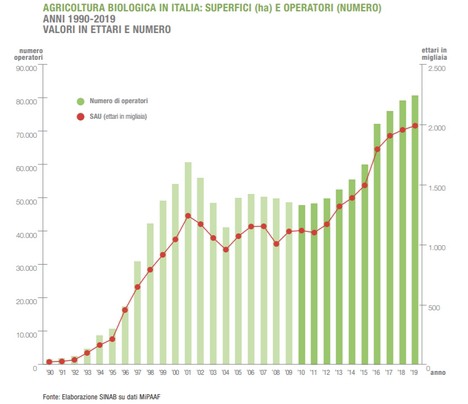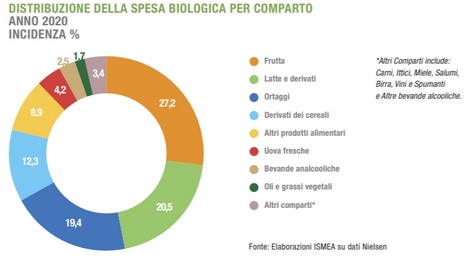As of December 31, 2019, Italy’s cultivated areas reached nearly two million hectares (1,993,236 hectares, +2% compared to 2018) earmarked for organic agriculture and horticulture with a number of growers using this method exceeding 80,000. Compared to 2010, there was an increase of more than 869 hectares and 29,000 growers. This is evident from the latest report from the Ismea-Sinab research entity.

An analysis of the geographical distribution shows that 51% of the hectares in question are located in four regions. These are Sicily (307,662 ha), Apulia (266,274 ha), Calabria (208,292 ha) and Emilia-Romagna (166,525 ha).
The categories of small fruits and nuts are stable, but there was a significant increase for figs and kiwis, whose areas increased 102 and 652 hectares. The acreage for citrus also increases again by 3% after a decrease in 2018. The cultivation areas for apples and pears increased respectively 8,235 and 2,788 hectares.
Areas under organic cultivation in Italy, 2018 and 2019. Values in hectares.

* The category vegetables includes strawberries and mushrooms.
** Fruit includes fruit from the temperate zone (apples, pears), fruit from the subtropical zone (kiwis, figs), small fruit - Source: SINAB, Organismi di Controllo - Click here to enlarge.
The consumption of organic food is increasing
In Italy, organic food consumption increased by 4.4% over the past year, accounting for a turnover of €3.3bn (data updated to the first half of 2020). To determine the value of the Italian organic market, consumption in various sectors such as Ho.Re.Ca., school canteens and exports should be added. The total share of organic food sales in Italian food expenditure is 4%.
Fruits, vegetables, milk and organic derivatives are increasingly found on special shelves in supermarkets. This seems to have broken the negative trend of previous years (+3 %).

The pandemic has accelerated the demand for organic products. This is because people now pay more attention to health and well-being and because the restaurants were closed, forcing consumers to eat indoors.
